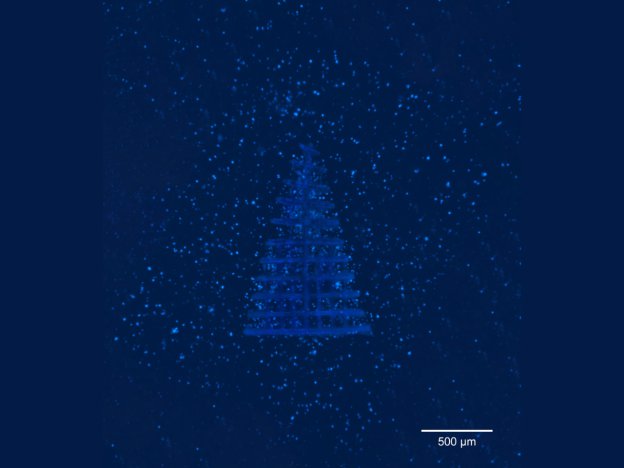



 CN/EN
CN/EN




 CN/EN
CN/EN

If you’re the type of person who usually scoffs at a bit of festive sparkle crammed in at every given opportunity at this time of year, then perhaps this novel Christmas-themed additive manufacturing (AM) application from bioprinting company Vital3D may just be the thing to win you over.
The Lithuania-based outfit, which is using 3D printing to develop solutions for medical research, drug discovery, and regenerative medicine, has applied its FemtoBrush bioprinting technology to produce a 2mm tall Christmas tree scaffold that demonstrates the potential for complex, functional 3D printed tissue scaffolds that provide ideal environments for cell growth.
See, who said bioprinting couldn’t be fun?
Vital3D’s femtosecond laser-based two-photon polymerisation technology is designed to address challenges in maximising organoid size, complexity, and diversity of cell types. The company’s unique approach to bioprinting is said to offer ‘significant impacts’ for organ transplantation and reducing the rate of animal testing.
Dr. Linas Jonušauskas, Chief Technology Officer at Vital3D Technologies said: “Our Christmas tree scaffold, while playful, represents a serious step forward. It’s a clear demonstration of the ability to create structures that support cell growth in more intricate and specialised ways. This rudimentary square scaffold is just the beginning. Our future work involves functionalised biopolymers and arbitrarily shaped 3D structures, pushing organoid research beyond its current limits.”
But bioprinting isn’t just for Christmas, and as Dr. Jonušauskas explains, this tiny Christmas tree scaffold is said to demonstrate both the precision of Vital3D's process, and the future potential of the technology, beyond complex organoids, into future-facing applications in functional organ creation and transplantation.
Dr. Jonušauskas adds, “Bioprinting is not just about creating structures; it’s about creating hope and solutions. From addressing organ transplant needs to reducing reliance on animal testing, the possibilities are vast.”